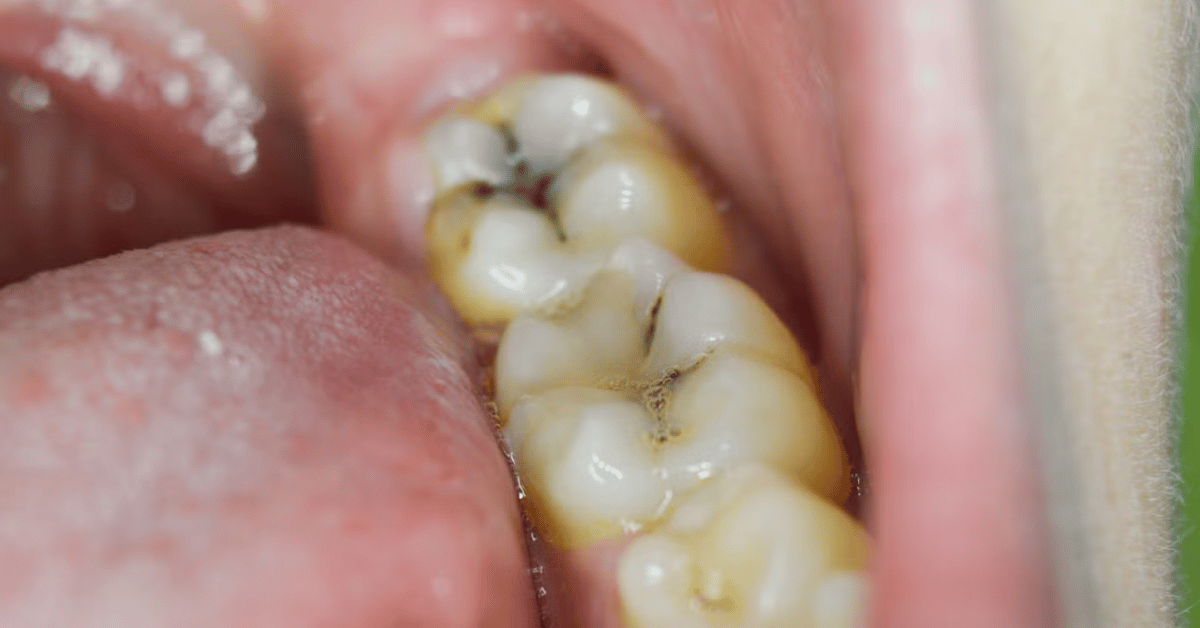In the earliest stages, a small cavity may go unnoticed—no pain, no sensitivity, and certainly no visible hole. However, this minor dental issue can quietly evolve into a more complex problem if ignored. A small cavity, medically referred to as an incipient or early-stage carious lesion, is essentially the beginning of tooth decay. While it may not immediately demand a filling, it still signifies the demineralization of enamel caused by bacterial acids. This stage offers a critical window where reversal or non-invasive management is still possible. Understanding what a small cavity is, how it develops, and what can be done at this stage allows individuals to make proactive decisions about oral health, sparing themselves from more severe dental complications down the line.
This article breaks down the intricate science behind small cavities and explores how they originate from daily habits like poor brushing, sugar-rich diets, and inconsistent dental visits. It also discusses what makes some people more prone to cavities than others and why fluoride plays a vital role in stopping or reversing the decay process. With real-world comparisons, expert quotes, and structured sections supported by tables and research-backed perspectives, this guide delivers a comprehensive look at an everyday issue that is often underestimated. Whether you’ve recently been told you have a small cavity or you’re simply keen on maintaining optimal dental health, this article equips you with actionable insights and essential knowledge in a clear, reader-friendly format.
“Cavities don’t start as holes; they begin as silent intruders eroding your enamel,” says Dr. Olivia Marrin, DDS, a preventive dentistry specialist.
What Is a Small Cavity?
A small cavity is an early form of tooth decay where the enamel begins to lose essential minerals due to acid produced by plaque bacteria. This stage is typically not painful and doesn’t present with major symptoms, which is why it often goes unnoticed. The process starts when food particles—especially those containing sugar—combine with saliva and bacteria to form plaque. Over time, this sticky film becomes acidic and begins to weaken the enamel, which is the protective outer layer of your teeth. If this continues unchecked, it leads to a full cavity.
What distinguishes a small cavity from a larger one is its confinement to the enamel layer. At this stage, the tooth’s dentin and pulp—where nerves and blood vessels reside—are not yet affected. Dentists can identify these small lesions through visual inspection, laser detection, or X-rays. Treatment options vary, but in many cases, a small cavity can be treated with remineralization therapies like fluoride varnishes or pastes. Since enamel lacks nerve endings, symptoms like pain or sensitivity typically don’t manifest until the decay penetrates deeper. That’s why preventive care and regular checkups are crucial for detecting and managing small cavities before they become significant concerns.
Causes of Small Cavities
The formation of a small cavity is a multifactorial process involving a delicate balance between demineralization and remineralization. The primary culprit is plaque—a biofilm of bacteria and food debris that clings to the teeth. When sugar and carbohydrates are introduced, plaque bacteria metabolize these substances to produce acid. This acid attacks the enamel, beginning the demineralization process. Saliva, which contains calcium and phosphate, naturally works to neutralize acids and repair enamel, but when acid exposure is too frequent or saliva production is inadequate, the balance tips toward decay.
Diet plays a pivotal role. Frequent consumption of sugary snacks, sodas, and acidic beverages increases the frequency and intensity of acid attacks. Inadequate oral hygiene accelerates the problem by allowing plaque to persist. Genetic factors also come into play—some people have thinner enamel, poor salivary flow, or higher bacterial loads, making them more susceptible. Other contributors include chronic dry mouth (xerostomia), certain medications, smoking, and even stress, which affects saliva production. Understanding the root causes enables individuals to intervene effectively. Identifying behavioral and biological risk factors is the first step toward prevention and treatment.
“We often blame sugar, but it’s the frequency of sugar exposure that truly accelerates decay,” notes Dr. Alan Vickers, a dental researcher.
Early Symptoms and Identification
Unlike advanced dental caries, small cavities often exhibit subtle or no symptoms. However, with attentive oral hygiene practices and routine dental checkups, early indicators can be detected before more serious damage occurs. The first visual cue is usually a white spot lesion—an opaque area on the enamel surface indicating mineral loss. These spots are often found near the gum line or on the chewing surfaces of molars. In some cases, you might notice slight roughness when you run your tongue across the tooth, or a faint discoloration that doesn’t go away with brushing.
Dental professionals use tools such as intraoral cameras, dental explorers, and X-rays to catch these lesions early. New technologies like DIAGNOdent lasers can even detect subsurface lesions not visible to the naked eye. If a white spot is diagnosed as a small cavity, a treatment plan typically begins with remineralization and dietary modification. It’s important to act during this phase because once the lesion progresses to involve the dentin, repair becomes more invasive. Consistency in daily oral care routines and professional evaluations is key to early identification and intervention.
Treatments for Small Cavities
Treatment for a small cavity largely depends on the stage of the lesion and whether it has progressed beyond the enamel. If caught early, non-invasive options are often sufficient. One of the most common methods is fluoride therapy. This may include fluoride varnishes, toothpaste with high fluoride content, or professionally applied gels that promote remineralization. The goal here is to replenish the lost minerals in the enamel before the cavity breaks through to the dentin layer.
Another preventive measure involves the use of sealants. These thin, protective coatings are applied to the chewing surfaces of molars to block bacteria and food particles from accumulating in deep grooves. For those at higher risk, dentists might recommend calcium phosphate products or prescription-strength mouth rinses. In more advanced early lesions, micro-invasive techniques such as resin infiltration (Icon therapy) can halt progression without drilling. This technique involves infusing a special resin into the lesion to seal and stabilize it.
In every case, early diagnosis allows for conservative care. Ignoring a small cavity often results in the need for fillings, crowns, or even root canals—treatments that are costlier, more invasive, and require longer recovery periods.
Comparative Table: Treatments by Cavity Stage
| Cavity Stage | Symptoms | Treatment Options | Invasiveness |
|---|---|---|---|
| Early (White Spot) | No pain, white opacity | Fluoride therapy, remineralizing pastes | Non-invasive |
| Enamel Cavity | Minor discoloration | Sealants, resin infiltration (Icon) | Minimally invasive |
| Dentin Involvement | Sensitivity, pain | Fillings, possible crown | Invasive |
| Pulp Involvement | Severe pain, infection | Root canal, extraction | Highly invasive |
Preventive Measures and Daily Habits
Preventing a small cavity starts with strengthening your oral hygiene routine. Brushing at least twice a day with fluoride toothpaste, flossing daily, and using an antibacterial mouthwash are fundamental practices. More advanced approaches include using electric toothbrushes, which are more effective at removing plaque than manual ones. Replacing your toothbrush head every three months, or sooner if bristles are frayed, also matters more than most realize.
Dietary habits are equally influential. Reducing your intake of sugary and acidic foods helps maintain a neutral pH in your mouth. Chewing sugar-free gum after meals can stimulate saliva production, which in turn aids in neutralizing acids and remineralizing enamel. Drinking water—especially fluoridated water—rinses away food particles and supports saliva in restoring enamel health. Regular dental checkups, ideally every six months, allow professionals to monitor changes, apply preventive treatments, and catch small cavities before they worsen.
These daily habits may seem small, but they play a significant role in preventing decay. Educating children early about dental hygiene sets the tone for lifelong habits that reduce the risk of cavities.
Risk Factors and Vulnerable Populations
Not everyone faces the same risk level when it comes to developing small cavities. Several demographic and physiological variables contribute to cavity vulnerability. Children, for instance, are especially prone to small cavities due to less effective brushing, higher sugar intake, and immature enamel. Older adults face their own challenges; conditions like gum recession expose tooth roots, which are more sensitive to decay, while medications can reduce saliva flow.
People with braces or dental appliances have a higher risk of plaque accumulation around brackets and wires, creating ideal conditions for cavity formation. Additionally, individuals with certain chronic illnesses—such as diabetes—are more susceptible to dental caries due to altered immune responses and dry mouth caused by medications. Genetics also play a role; enamel thickness, saliva composition, and even bacterial flora are partially inherited.
Awareness of these risk factors allows for more personalized prevention strategies. For example, someone on medications that reduce saliva may benefit from specialized mouth rinses, humidifiers, or increased water intake. Vulnerable populations need more than general advice—they need targeted strategies for managing their oral health.
Table: High-Risk Groups and Recommended Strategies
| Risk Group | Contributing Factors | Recommended Strategies |
|---|---|---|
| Children | Poor brushing, sugary diet | Parental supervision, fluoride varnishes |
| Elderly | Gum recession, dry mouth | Saliva substitutes, gentle brushing |
| Diabetics | Compromised immunity | More frequent checkups, antimicrobial rinses |
| Orthodontic Patients | Plaque retention | Specialized brushes, interdental cleaners |
| Genetically Prone | Thin enamel, acid-producing flora | High-fluoride toothpaste, dietary monitoring |
Psychological and Social Impacts
While a small cavity may seem like a minor concern, the psychological and social implications can be noteworthy, particularly for those who experience frequent or visible dental issues. Teens and young adults may become self-conscious about discolored teeth, even at the early stages. This can affect self-esteem, participation in social activities, and even academic performance. Adults, especially those in professional settings, might worry about their appearance or bad breath associated with decay.
Dental anxiety also plays a role. The fear of dentists leads many people to delay treatment until symptoms become severe. Unfortunately, the longer one waits, the more extensive and expensive the treatment becomes. Providing education about small cavities—emphasizing that they are manageable and often reversible—can alleviate much of this anxiety. Furthermore, integrating oral health awareness into broader wellness discussions can destigmatize dental care and promote proactive habits.
“Ignoring dental issues due to fear or shame only magnifies the problem. Education is a powerful antidote,” affirms Dr. Sophia Lin, oral health advocate.
Conclusion: Taking Control of Your Oral Health
A small cavity is more than just an early dental anomaly—it’s a critical signal, a warning light on the dashboard of your oral health. If acknowledged and treated early, it can be reversed or managed without invasive procedures. But when neglected, it marks the beginning of a cascade that can lead to pain, infection, and significant dental costs. Prevention remains the most effective strategy, rooted in consistent hygiene, a tooth-friendly diet, regular dental visits, and informed personal habits.
Recognizing that dental health is an integral part of overall wellness helps to reframe the way we think about cavities. These aren’t merely isolated dental events; they reflect systemic behaviors and biological tendencies that demand our attention. With growing access to advanced diagnostics and preventive treatments, managing small cavities has never been more accessible or more important.
Education, personalized care, and behavioral change form the triad of success in preventing the escalation of early-stage tooth decay. As this guide illustrates, the key lies in understanding the issue at its core—and taking decisive, informed action. In the end, it’s not just about saving a tooth; it’s about safeguarding confidence, health, and quality of life.
FAQs
1. Can a small cavity heal on its own without treatment?
Yes, in its early stages, a small cavity can remineralize with fluoride use and improved oral hygiene habits.
2. How do dentists detect a small cavity if there are no symptoms?
Dentists use tools like X-rays, intraoral cameras, and laser detection to identify small cavities before symptoms appear.
3. What does a small cavity look like?
It often appears as a white spot or slight discoloration on the tooth, typically near the gum line or chewing surfaces.
4. Are children more likely to get small cavities than adults?
Yes, due to less consistent brushing and higher sugar intake, children are more prone to developing small cavities.
5. What foods should I avoid to prevent small cavities?
Avoid frequent consumption of sugary snacks, acidic drinks, and sticky foods that fuel bacterial acid production.











